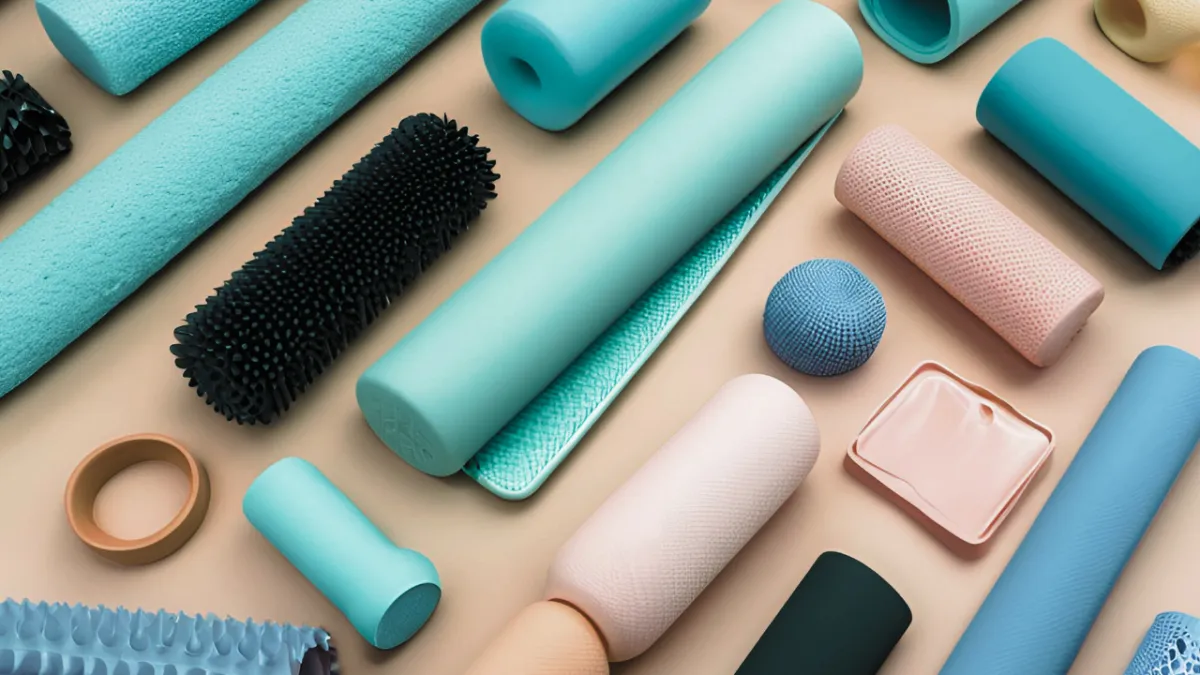
Aches and Pains? Try These 5 Essential Foam Rolling Exercises
Aches and pains are common companions in our daily lives, whether from prolonged sitting, intense workouts, or simply the wear and tear of everyday activities. One effective method to alleviate these discomforts is through foam rolling, a self-myofascial release technique that targets muscle tightness and enhances flexibility. Incorporating foam rolling into your routine can be a game-changer in managing and preventing pain. Here are five essential foam rolling exercises to address common aches and pains:
1. Upper Back (Thoracic Spine) Roll

Targets: Upper back muscles and thoracic spine.
Benefits: Relieves tension from prolonged sitting or hunching, improves posture, and enhances spinal mobility.
How to Perform:
· Sit on the floor with the foam roller positioned horizontally behind you.
· Lie back so that the roller is under your upper back.
· Cross your arms over your chest or support your head with your hands.
· Lift your hips off the ground, engaging your core.
· Slowly roll from the top of your shoulders to the middle of your back, pausing on tight spots.
· Perform for 30-60 seconds.
2. Glute Roll

Targets: Gluteal muscles.
Benefits: Reduces lower back pain, alleviates hip tightness, and enhances mobility.
How to Perform:
· Sit on the foam roller, placing your hands on the floor behind you for support.
· Cross your right ankle over your left knee, forming a figure-four position.
· Tilt your body slightly to the right, focusing pressure on the right glute.
· Roll back and forth, pausing on tender areas.
· Switch sides and repeat.
· Perform for 30-60 seconds on each side.
3. Quadriceps Roll
Targets: Front thigh muscles (quadriceps).
Benefits: Eases knee pain, reduces muscle tightness, and improves flexibility.
How to Perform:
· Lie face down with the foam roller under your thighs.
· Support your upper body with your forearms.
· Engage your core to maintain a neutral spine.
· Slowly roll from the top of your hips to just above your knees, focusing on tight areas.
· Perform for 30-60 seconds.
4. Calf Roll

Targets: Calf muscles.
Benefits: Relieves calf tightness, reduces risk of plantar fasciitis, and enhances ankle mobility.
How to Perform:
· Sit on the floor with your legs extended and the foam roller under your calves.
· Place your hands on the floor beside you for support.
· Lift your hips off the ground, shifting weight onto the roller.
· Roll from just below the knees to the ankles, pausing on tender spots.
· Perform for 30-60 seconds.
5. Iliotibial (IT) Band Roll
Targets: IT band along the outer thigh.
Benefits: Reduces knee and hip pain, alleviates tightness, and improves lateral leg movement.
How to Perform:
· Lie on your side with the foam roller positioned under your outer thigh.
· Cross your top leg over and place that foot on the floor for support.
· Use your hands and the non-rolling leg to control movement.
· Roll from just below the hip to above the knee, focusing on tight areas.
· Switch sides and repeat.
· Perform for 30-60 seconds on each side.
Tips for Effective Foam Rolling:
· Consistency: Incorporate foam rolling into your daily routine for optimal results.
· Pressure Control: Adjust the pressure by using your body weight; if it's too intense, use your arms or opposite leg for support.
· Avoid Bony Areas: Focus on soft tissues and avoid rolling directly over bones or joints.
· Hydration: Drink plenty of water to help flush out toxins released during foam rolling.
By integrating these foam rolling exercises into your routine, you can effectively address common aches and pains, enhance flexibility, and promote overall muscle health. Remember to listen to your body and adjust techniques as needed to ensure a safe and beneficial experience.
Move Better. Feel Better. Live Better.
Self-Myofascial Release -- Upper Body
Self-Myofascial Release -- Lower Body
